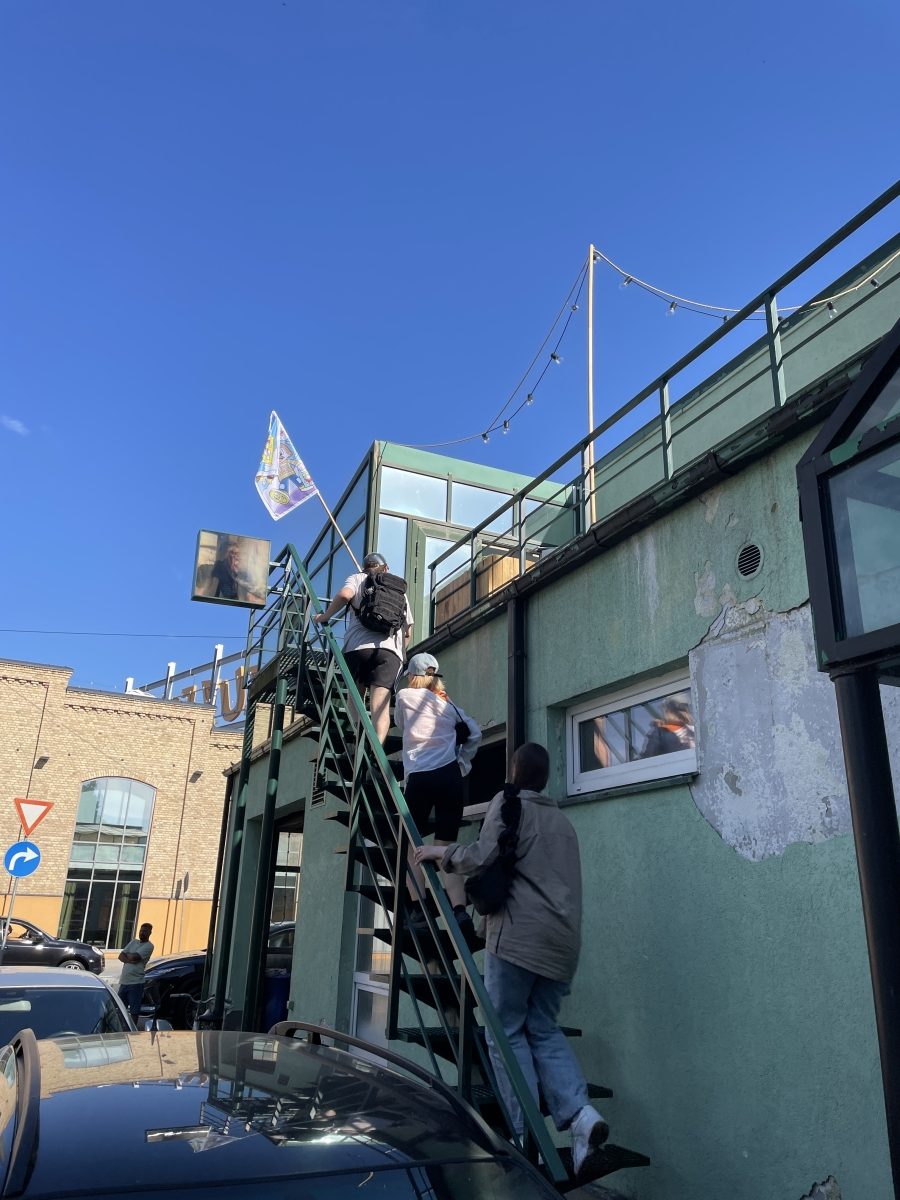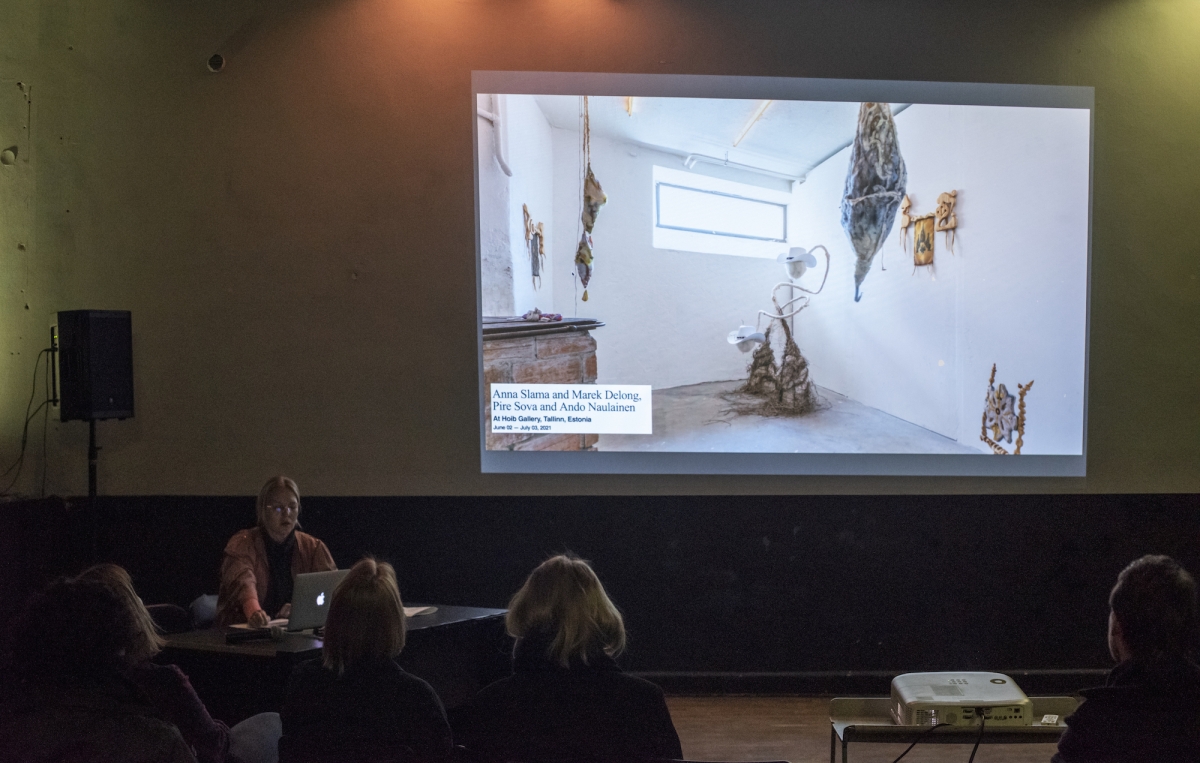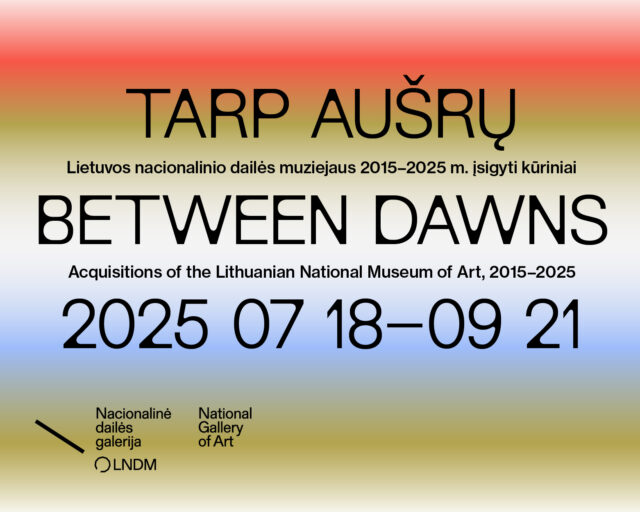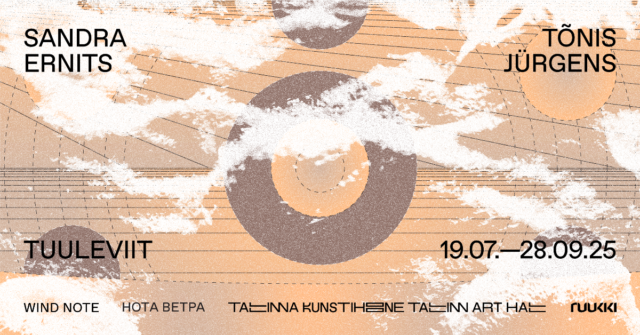How do independent initiatives participate in the ecology of the Baltic art scene, and how can this ecology be fostered in mutual and convivial means?
Independent Initiatives Baltics, a new platform for formal cooperation and informal encounters between those contributing to the independent art scenes in the Baltic countries, has been preoccupied with this simple but complex question. Having kicked off in 2022 with funding from Nordic Culture Point, with the organisational capacity of the Lithuanian Interdisciplinary Artists’ Association and the curatorial hands of Lina Rukevičiūtė and Vaida Stepanovaitė, the network coalesced during its deep-diving visits to the independent art scenes in Vilnius, Riga and Tallinn.
The text in front of you has two tasks. It will make public a lot (and we do mean a lot) of shared questions gathered during the travelling formation of Independent Initiatives Baltics. And it will also map out an array of independent spaces and initiatives in the region, bearing in mind, of course, that all maps are always incomplete, especially if one attempts to map something very mobile and quite volatile (by choice or circumstance), and which enjoys relative independence from stratified domains.

Riga research trip. LOW gallery. Photo_ IIB
The Independent Initiatives Baltics network emerged from a mutual curiosity about our neighbours’ luscious cultural gardens, which share an imaginary boundary and yet remain quite mysterious to the outside viewer. It is not so easy for ‘non-locals’ to get wind of what happens in the arts in Lithuania, Latvia or Estonia on a daily basis, despite the close proximity between them. Does that mean our desires, needs, problems and worries are very different, even as we share similar historical and cultural-political trajectories? Is there a space and a need to think about building cooperation and other forms of friendship between geographically adjacent countries, about creating the conditions to nurture similarities or productive differences? And how should we go about it?

Vilnius Meeting. Hoib Gallery Presentation. Photo Bon Alog
An attempt to answer the last question was ‘Vilnius Meeting: Schools & Gardens’ in April 2022, when Independent Initiatives Baltics had its inaugural meeting at the SODAS 2123 artist-run cultural complex. A total of 22 independent initiatives and spaces operating in the Baltic gathered to establish a formative conversation about running independent practices (with Nordic and West European initiatives from Artist-Run Network Europe contributing as well). It included truly fundamental questions: What is the basis and need for regional cooperation between (independent) cultural scenes, and what does cooperation even mean in this case? What resources are needed to sustain independent cultural initiatives individually and collectively, and where do these resources come from? To whom do we speak as independent initiatives, and to whom should we be accessible, who are our audiences, our communities, our collaborators and supporters? Finally, are there any region or nation-specific answers to these questions?
Of course, these starting conversations leave a lot of ground to cover with regard to the cultivation and upkeep of regional cultural ecologies, practical, poetic and otherwise. During visits to Riga and Tallinn later in 2022, Independent Initiatives Baltics explored the moving dots without formalising them too much, laying the ground for further collaborative activities, including more existing and forthcoming independent initiatives and spaces, and visualising what a productive shared platform would look like.
In order to momentarily join some of these moving dots, below is a list of spaces the Independent Initiatives Baltic network visited, discussed, and were made aware of at the time.

Riga research trip. Palette Kiosk. Photo IIB
Vilnius and Lithuania
apiece is a window gallery in the centre of Vilnius (on M.K Čiurlionio Street) showing a single artwork of contemporary visual art, or a design object, at a time. The gallery does not adhere to the standards of common exhibition spaces: it does not have exhibition openings, it has no working hours or days (24/7), and it presents works/objects in a space that is visible to the viewer through the showcase window.
Atletika is a contemporary art space at the SODAS 2123 cultural centre in Vilnius. It presents emerging and acclaimed artists from Lithuania and abroad. Its exhibition programme is open to experimentation, the exploration of new processes in art, and ideas in various directions.
Autarkia is an artist day-care centre, a club of interests, an office space for putative experiences and imaginary solutions, a bistro of experimental gastronomy, a gallery, and a project development hotel in Vilnius. It is an artist-run, service-oriented institution focused on creating financial, promotional and conceptual artist support and resources in Lithuania and abroad.
Editorial is a project space. It hosts the editorial desks of Artnews.lt and Echo Gone Wrong magazines. It is a space for shows, talks and motions, represented by the curators Neringa Černiauskaitė and Vitalija Jasaitė.
FAMM is an ever-changing entity, a cultural space that aims to foster creative interdisciplinary collaboration. Initiated by a group of students from Vilnius Academy of Art, and having opened in March 2022, it is a new project space, the result of longstanding cooperation between LTMKS/SODAS 2123 and Vilnius Academy of Art.
Išgirsti is a cultural-social space in Naujininkai in Vilnius. It houses the Išgirsti and Kreivės initiatives, and is devoted to small queer cultural and social happenings (film screenings, exhibitions, meetings and lectures), and psychological support. It is also developing a queer library and archive. It is represented by the organiser Augustas Čičelis.
Montos Tattoo is a space in Vilnius initiated by Gediminas G. Akstinas, Liudvikas Buklys, Gerda Paliušytė and Maya Tounta. Concerned with all kinds of cultural knowledge and possibilities, art histories and reciprocity in politics and poetry, Montos Tattoo can be seen as an extension of different daily activities; it comes from a simple interest in what something means. The name Montos Tattoo originates from the story of Monta, a friend of a friend, who lived in Vilnius 20 years ago and had an unfinished tattoo on his arm. Published in a magazine, ‘Monta’s Tattoo’ became an outline and an open vessel for different stories to come.
Lokomotif is a duo of curators (Milda Dainovskytė and Laurynas Skeisgiela) and a contemporary art space that operated in Lentvaris between 2019 and 2021. Facilitating exhibitions, residencies and art education gives shape to a meeting-based practice by which Lokomotif combines contemporary art practices with strategies in the formation of a town’s identity, and questions the aspirations of regional cultural policy and their practical implementation in a particular place.
The Swallow project space focuses on managing, producing and exhibiting curatorial and artistic projects, and will also develop arts-based educational programmes, and present young Lithuanian and Baltic art abroad.
The gallery was established by Aistė Kisarauskaitė, continuing the tradition of Soviet-era Modernism, when works were first shown at home or in the studio, and sometimes only at home or in the studio.
Verpėjos is an artist-run initiative founded in 2017 by the artist Laura Garbštienė to research and discuss the traditional rural lifestyle and the preservation of nature, and start a discourse on local and global changes and processes. Working with contemporary artists, curators, craftspeople and natural scientists, they organise interdisciplinary workshops, symposiums and exhibitions. VšĮ Verpėjos is a non-profit organisation that operates on a voluntary basis.
A project space in the foyer of a former Soviet factory, run by the artist Dainius Liškevičius.

Tallinn research trip. Vent Space. Photo IIB
Riga and Latvia
427 opened in 2014, with the aim of frequently showing contemporary art, to uncover signs, cast nets, and exchange with confabulations.
Ag is an artist-run gallery in Riga, founded in 2021.
Dom gallery opened in 2021 in Gertrudes Street in Riga, and is an artist-run space organised by a team of three artists.
The Noass art centre is an artist-run organisation with an operating history dating back over 20 years. The organisation was founded in 1998, and in 2005 it was awarded the status of a public-benefit organisation. Among Latvia’s non-governmental cultural organisations, Noass has one of the richest tradition-based histories. Its interests include visual art, literature, contemporary dance, theatre, sound art, moving image (video) and art projects in the urban environment. The goal of Noass is to support and promote the development of visual art.
Palette, created by the Riga-based artist Daria Melnikova, is a journeying platform that functions as a bar. Each episode comprises an eclectic mixture of artworks and collaborations of various kinds in a conjured set-up, formed from daily observations, historical references, personal inspiration, and passion. Since the summer of 2022, Palette has used a seasonal venue, a kiosk as part of the urban environment, an intervention in the garden meadow of the Sporta Pils dārzi. The project activates a work of art as a meeting point, where artist meets artist, and artist meets visitor, in non-institutional and informal settings.
RIXC is a centre for new media culture, an art gallery and an artists’ collective, that initiates projects at the intersection of art, science and emerging technologies. Its activities include running an art gallery, the production of artwork and innovative art, science and technology projects, organising the annual RIXC Art Science Festival, exhibitions, and publishing the journal Acoustic Space.
Totaldobže is a platform for the creation of contemporary art that started as the Totaldobže art centre in 2010 in the former VEF factory in Riga. Totaldobže invites people from various fields to collaborate, connect and communicate human values through art. Residencies, workshops, lectures and discussions are organised in an unused cinema, and in various rooms in the former Faculty of Mechanical Engineering, Transport and Aeronautics at Riga Technical University. Totaldobre organises Black Hole workshops: process-driven collaborations that facilitate artists from various disciplines with a focused residency period within which they engage in an intensive creative exchange supported by a moderator. Black Hole is about experimenting, taking risks, and allowing for failure.
A space for contemporary art situated in Tallinas ielas kvartals.
Vagonu Zāle is a cultural space in Riga in the growing Vagonu Creative Quarter.
The Life Design Quality Institute is a living, creative ecosystem based at 36 Viskaļu Street in Riga. The FREE RIGA team, together with the residents (users of the building’s spaces) strive to forge their own and society’s happiness, with the aim of understanding and improving the quality of life in a creative, socially open environment.
Temporarily closed. Low is an independent art space connecting local artists and audiences with the Baltic region and beyond, through a diverse programme of events, talks, exhibitions and happenings. Low has become an important part of the Latvian cultural landscape, and works hard to bridge the local and international scenes, providing a safe space to connect and collaborate, and in doing so, dissecting, critiquing and celebrating both high and low culture, the Soviet legacy, and our extreme present.

Panel discussion The Baltic Way. On collaborations and specifics of Baltic Art Scene at EKKM Tallinn. Photo by Kaspars Lielgalvis
Tallinn and Estonia
A temporary art space in Tallinn’s Old Town: nomadic, process-based, temporary, tactical and contradictory.
Artishok Biennial is a unique exhibition format in Estonia which brings together ten artists and ten writers in different locations each time.
The Flo Kasearu House Museum is a site-specific art project by the contemporary artist Flo Kasearu in her home, attic, basement and backyard. The Flo Kasearu House Museum is situated in a cosy wooden house, very typical of the peaceful and prestigious district of Pelgulinn in Tallinn. The artist opens her home to visitors, who get an exclusive chance to be part of the creative atmosphere of the house.
The Estonian Union of Photography Artists (FOKU) was founded by ten artists in 2007 to unite and represent its professional members. Today, FOKU has 44 members. It aims to introduce and develop contemporary art and visual culture, and to involve different audiences in a discussion on art. The mission of the union is to broaden society’s interest in contemporary visual culture, and to increase knowledge about the Estonian art scene internationally. FOKU has organised Tallinn Photomonth, an artist-led biennial of contemporary art and visual culture, since 2011. With each time, the biennial presents remarkable works by Estonian and international artists. Tallinn Photomonth looks at developments in art and society in a world mediated by cameras, screens and images.
Galerii Galerii is a mobile art platform founded in the spring of 2016. Over the years, it has operated as a contemporary art centre, a private gallery, an artists’ residency, and a video game museum.
Hoib is a contemporary art gallery located in the basement of a residential building at Tehnika 15 in Tallinn. Its name is a clever and ‘accidental’ misspelling of the surname of the gallery’s founder Lilian Hiob. Located below ground level in a residential building, the idea to refurbish the basement as a gallery space was inspired by the need for an autonomous exhibition space for young artists and curators. Free from established institutional restrictions, the new gallery allows for artistic experimentation and curatorial freedom.
A gallery for contemporary art in Võru in Estonia.
An artist-run initiative in Tallinn’s Kalamaja district.
The Mihhail gallery was born in 2016 out of the necessity to make white-cube-free content among a group of young art agents in Estonia.
A web-based art gallery exhibiting artworks curated solely for online viewing.
Vent Space is an artist-run project space run by students at the Estonian Academy of Art in Tallinn, providing a public exhibition space and diverse programmes.
A window gallery moving across various locations in Tallinn, run by the Estonian Academy of Art.
Not operating. Founded in September 2013, Rundum was an artist-run space based in Tallinn in Estonia, a creative and independent platform run by young artists. It aimed to react to gaps in the local art world, creating opportunities to relate to different locations, offering new exhibition spaces, and more flexible and experimental formats. Rundum strove to bring together young people working in different fields of art, in order to foster creative collaboration and the mutual exchange of ideas and information. In addition to its exhibiting and performing formats, Rundum also hosted an educational programme of discussions, talks, film screenings and reading groups, focusing on its own initiative practices, artist-run spaces in other countries, self employment, living and working conditions for art workers, and free-form education.
Not operating. Konstanet was a non-profit gallery founded in July 2013. It was made up of two spaces: the online space at konstanet.com, and a scaled (1:5) physical space in the centre of Tallinn in Estonia.

Tallinn research trip. Vitriingalerii. Photo IIB

Vilnius Meeting. Presentation of RUNDUM space. Photo Bon Alog






























